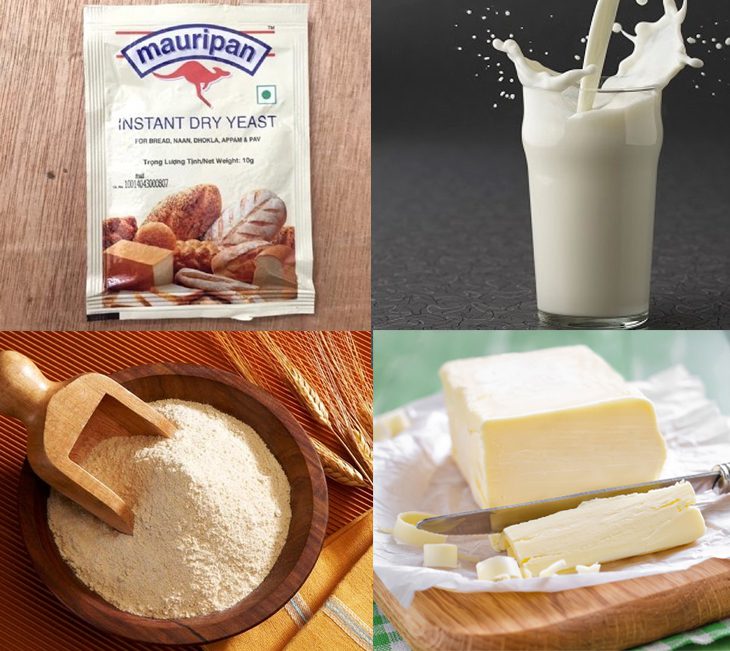-
Preparation
3 hours 30 minutes
-
Difficulty
Medium
Croissant – a famous pastry from Europe now has a recipe for you to try making this pastry right in your home kitchen. Let’s get cooking now!
Ingredients for Croissant Serves 6
Dry yeast 4.5 teaspoons (bread yeast) Fresh milk 500 ml Lemon juice 20 ml Melted butter 4 tablespoons All-purpose flour 680 gr Chicken egg 1 White sugar 50 gr Salt 2 teaspoons Unsalted butter 454 gr (keep refrigerated)
How to make Croissant
-
Knead the dough, let it rest
Mix fresh milk with lemon juice. Stir well and let it sit for 10 – 15 minutes for the milk to ferment and curdle. Using this milk will make the croissant fluffier, softer, and more flavorful than using regular milk.
Dissolve the yeast with 1 teaspoon of sugar and 6 tablespoons of warm water. Let it sit for about 5 – 10 minutes for the yeast to activate.
Then add 1/2 of the flour, the remaining sugar, melted butter, fermented fresh milk, salt, and 1 egg yolk, mixing well until the ingredients are combined.
Add the remaining 1/2 of the flour, knead for 10 – 15 minutes until the dough becomes soft and smooth.
The kneaded dough will be pliable and have good elasticity; if you press your finger on the surface of the dough, it will spring back. Then let the dough rest for about 1 hour.
Note:
- Make sure to attach the correct tool to knead the dough with your mixer to do it correctly!
- After adding the remaining 1/2 of the flour, let the dough rest for 8 – 10 minutes before proceeding to knead. This resting period will help reduce stickiness and make kneading easier.
- When kneading, lightly dust your hands with a thin layer of flour (no more than 10g of flour); this will help reduce stickiness and make kneading easier.
- The hand-kneading process may take 20 – 30 minutes.
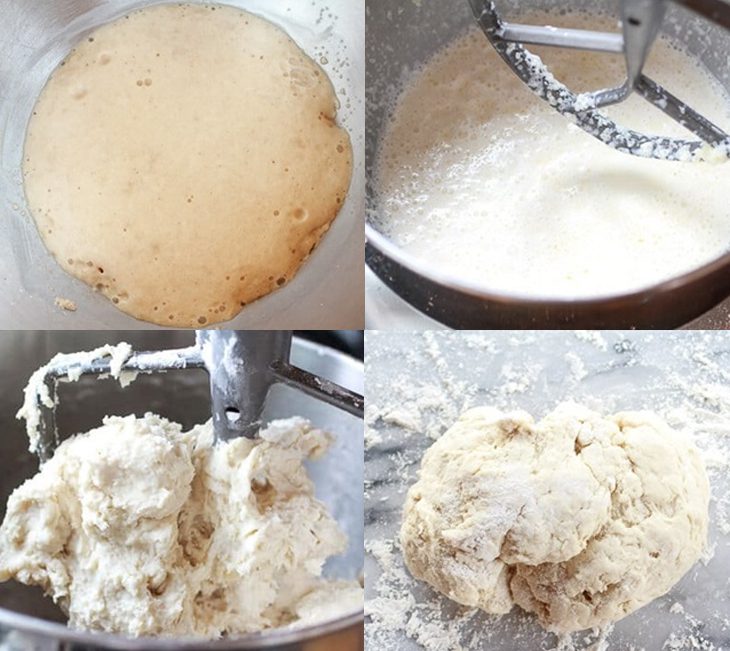
-
Roll out the butter, first dough rest
Place the butter in a zip bag and roll it out until it’s evenly flattened. Then place it in the refrigerator for 30 minutes.
When the dough has rested enough, take it out, roll it thin, and place it in the refrigerator for about 15 minutes.
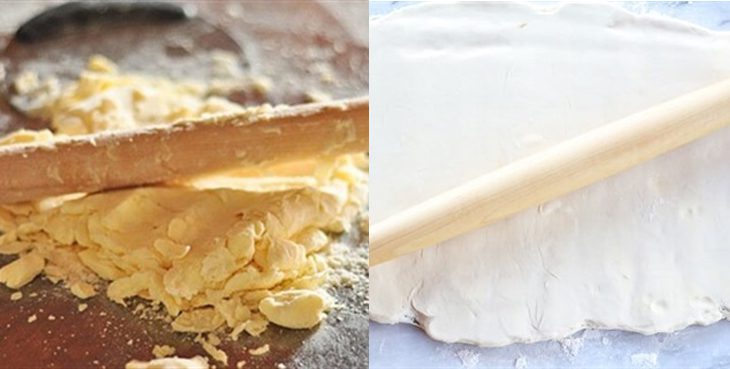
-
Rolling the dough, folding and proofing for the second time
After 30 minutes, take the unsalted butter out, use a knife to cut around and remove the plastic bag.
Take the dough out and roll it thin. Place the unsalted butter on one side of the rolled dough mixture, fold it into thirds, and pinch the edges tightly. Place it in the refrigerator to proof for another 30 minutes.
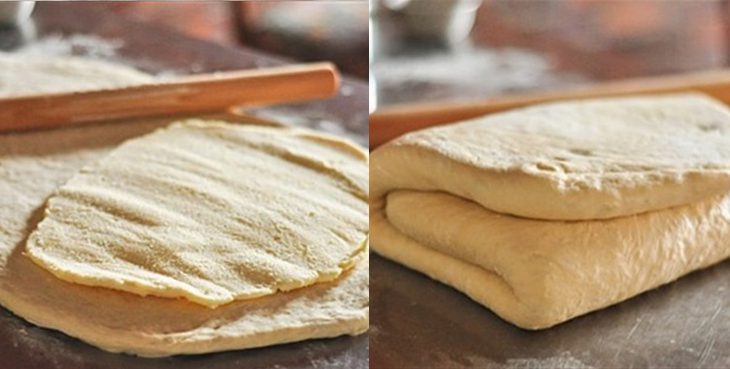
-
Rolling the dough, folding and proofing for the third time
After 30 minutes, take the dough out, roll it lengthwise and fold it in half. Wrap the dough tightly with plastic wrap, and refrigerate for another 30 minutes.
Then, take the dough out, roll it thin again, then wrap it tightly and put it back in the refrigerator, proof for 6 – 7 hours.
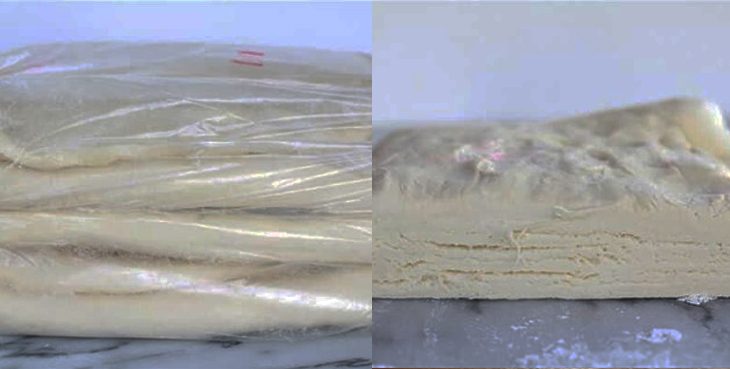
-
Shaping
After 6 – 7 hours, take the dough out and place it on a floured surface. Roll the dough thin to about 3mm, then use a knife to cut the dough into 12 triangle-shaped pieces.
Brush flour on top. Roll from the base of the triangle up to the tip, bending the two ends slightly.
Note:
-
Cut the dough into rectangles, then cut diagonally to create triangles.
-
At this step, if you prefer to add sweet or savory filling, you can put your favorite filling in, such as peanut butter, chocolate,…, then proceed to roll it up.
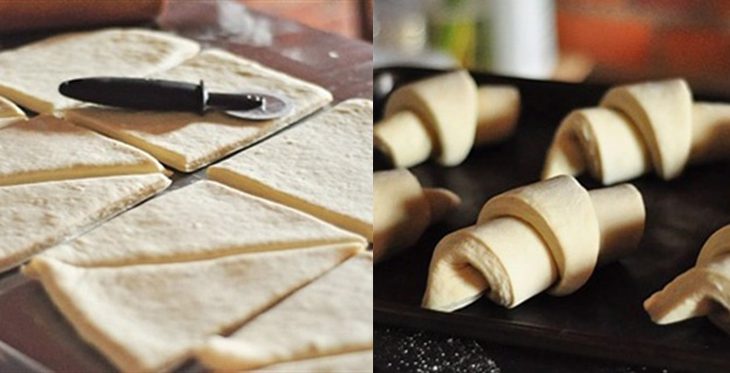
-
-
Baking the bread
Place the bread on a baking tray lined with parchment paper. Bake the bread at a temperature of 150 – 170 degrees Celsius.
For the first 7 minutes, bake the bread at 170 degrees Celsius, then adjust the oven down to 150 degrees Celsius.
The total baking time is 15 – 20 minutes with the setting for top and bottom heat.

-
Final product
The croissant is complete. The bread is flaky, soft, fragrant, easily torn into thin layers, and rich in butter flavor. You can enjoy it as is or dip it in sweetened condensed milk for an extra creamy taste!

Croissant and its origin:
Origin:
– Croissant (crescent roll) or also known as “bánh sừng bò” (from French: croissant). It is a type of pastry made from flour, yeast, butter, milk, and salt.
– A proper croissant must be really flaky, crispy, and can be torn into thin layers, with a hollow inside (later variations include sweet or savory fillings inside).
Origin:
– This type of pastry l is a hallmark of French culinary culture and is a popular pastry throughout Europe.
– The pastry originally came from Austria, called Kipfel (crescent moon), shaped like the crescent moon – the national emblem of Turkey to remind the Austrian people of their formidable enemy of the past.
– Later, when the Austrian princess – Marie Antoinette married the French heir, King Louis XVI, the “moon” pastry was introduced to prosperous France and transformed into the croissant due to its shape resembling the horns of a buffalo or cow.
Tips for successful execution:
- Use the right type of yeast for bread (Instant dry yeast).
- When using flour for dusting, do not use too much as it will dry out the dough. The pastry will be less soft and moist.
- The timing for each proofing must be precise to avoid issues such as the dough not rising, the pastry being crumbly, chewy, and mottled,…
See more:
Above is the recipe for croissant that TasteVN sends to you. It’s not too easy, but as long as you are meticulous in each step, nothing is impossible. Try your skills with this famous cake. Wishing you success!
*Refer to images and recipes from blog.beemart.vn.

